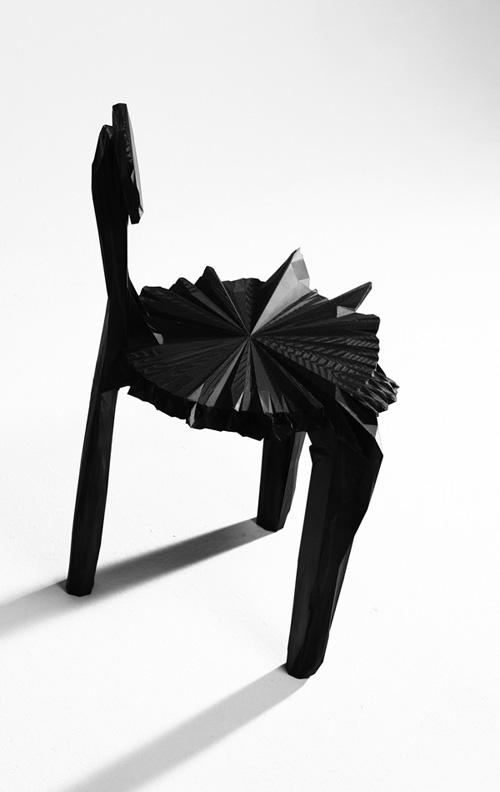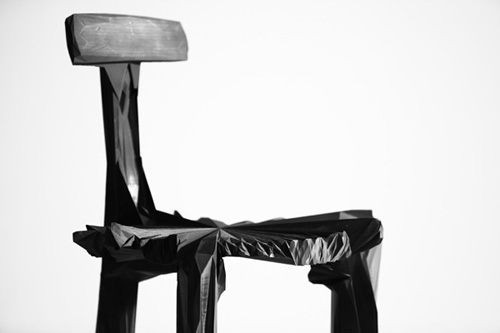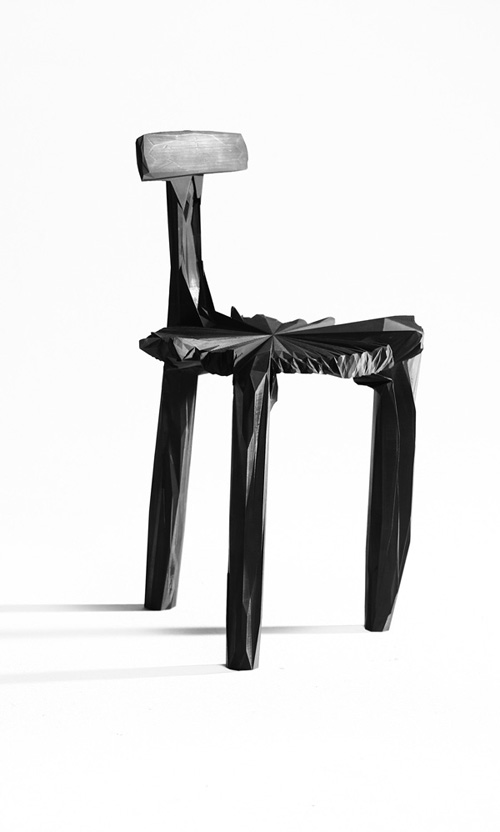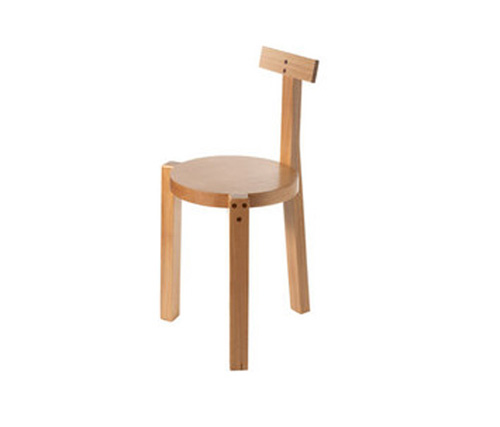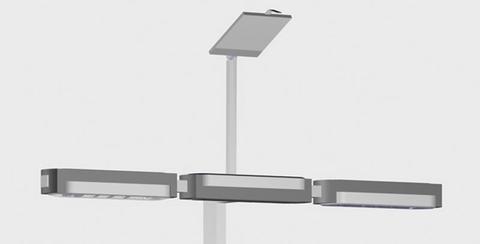Mysterious modulations: the Nóize chair by Estudio Guto Nequena.
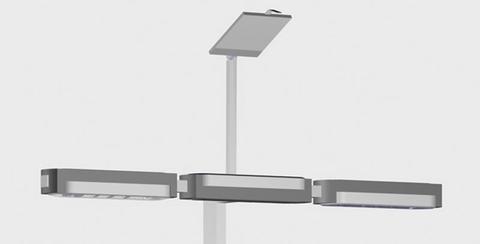
Even aficionados of modernist furniture would be hard pressed to recognize the genus of this chair designed by Estudio Guto Nequena of Brazil. The designers took, as their opening movement, the “Girafa”, a chair designed by the Brazilian architect Lina Bo Bardi.
In the next passage they took recordings from the streets that they describe as urban “noize” and mapped these on to the geometry of a CAD model of the original chair. Through a proscribed rule set the extraneous noise was allowed to “modulate” the existing geometry, deforming it and adding to it a sort of landscape reminiscent of a 3d oscillograph.
Criteria such as volume and frequency were allowed to distort the model. The resultant CAD model was then emailed to a producer in Belgium, who for the crescendo, printed it using 3d printing technology, and shipped the product back to Brazil.
The formal exercise is fascinating and is a tour de force. It also gives a glimpse of just where manufacturing is going. But is not the aim to print the product in the location it will be used, thus saving on transport cost and carbon? Well, perhaps when the printers become cheaper.
I would like to see chairs made using recordings from different cities. New York has a sound instantly recognizable from TV programmes and Indian cities also have a particular sound that is unlike any other country I have travelled in. Would the chairs be recognizable from the sound the city makes?
Gratitude to eVolo for bringing this to my attention.
